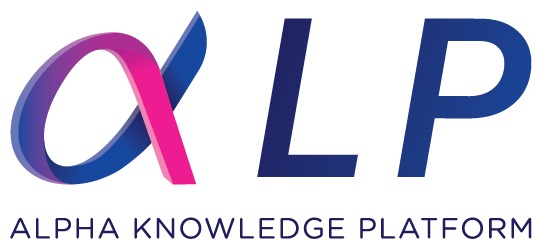TickerTape
Weekly Global Stablecoin & CBDC Update

This Week's Stories (So Far)
Financial Stability Board Chair Klaas Knot issued a letter to G20 leaders on November 20, 2025, ahead of their November 22-23 summit warning that the rapid evolution of private credit markets and stablecoins warrant close monitoring for financial stability risks. The FSB emphasized operating in a world of “considerable challenge” requiring vigilance on emerging financial market structures. The warning comes as the FSB found significant gaps and inconsistencies in implementation of crypto and stablecoin recommendations across jurisdictions in an October 2025 assessment.
Key Takeaways:
- FSB Chair warns G20 leaders November 20 that stablecoin evolution requires close financial stability monitoring
- October 2025 FSB assessment found significant implementation gaps in crypto-stablecoin recommendations
- Private credit market growth alongside stablecoins identified as dual emerging systemic concerns
- Letter sets agenda for G20 November 22-23 summit financial stability discussions
Why It Matters:
- Demonstrates FSB positioning stablecoins as priority G20 financial stability issue
- Highlights international regulatory coordination challenges despite agreed frameworks
- Could influence G20 commitments to harmonized stablecoin implementation standards
- Validates ongoing concern about stablecoin risks despite regulatory progress in major jurisdictions
Central banks in Europe and Asia warned on November 22, 2025, that stablecoin volatility from trade tariffs could trigger fire-sales of U.S. Treasuries similar to the 2008 Lehman Brothers collapse that froze global credit markets. Dutch National Bank Governor Olaf Sleijpen, a European Central Bank decision-maker, told the Financial Times that a run on dollar-pegged stablecoins could force rapid Treasury selloffs and require central banks to rethink monetary policies. The Bank for International Settlements and Reserve Bank of Australia concurred that stablecoin market stress increases during global economic turmoil precisely when the Treasury backing becomes less liquid and stable. A recent DNB report highlighted that while the stablecoin market “could hit $2 trillion within three years under the U.S. GENIUS Act,” a “huge risk lurks beneath its shiny veneer” due to concentration—Tether and Circle control 80%. Federal Reserve Governor Stephen Miran countered that “because GENIUS Act payment stablecoins do not offer yield and are not backed by federal deposit insurance, I see little prospect of funds broadly fleeing the domestic banking system.” Coinbase Chief Policy Officer Faryar Shirzad argued that “full-reserve backing makes stablecoins safer than banking” and their “broader adoption actually reinforces stability.”
Key Takeaways:
- ECB and Asian central banks warn stablecoin runs could trigger Treasury fire-sales rivaling March 2020 stress
- DNB projects $2 trillion stablecoin market by 2028 under GENIUS Act with 80% controlled by Tether-Circle duopoly
- Fed Governor Miran disputes banking system flight risk citing lack of yield and deposit insurance
- RBA reports stablecoin volume grew 50%+ in 12 months to June 2025 with projections to $4 trillion by 2035
Why It Matters:
- Highlights systemic risk debate as stablecoins approach scale requiring Treasury market impact assessment
- Demonstrates divergent views between U.S. officials promoting stablecoins and foreign central banks warning of contagion
- Validates concern that rapid stablecoin growth outpaces regulatory preparedness for systemic relevance
- Could influence stablecoin reserve composition rules and concentration limits in future regulations
Khyber-Pakhtunkhwa (K-P) Chief Minister Muhammad Sohail Afridi has approved the Khyber-Pakhtunkhwa Digital Payments Act 2025, positioning the province as Pakistan’s pioneer in developing a comprehensive legal framework for a digital economy. The legislation mandates that all payment systems across government departments, businesses, and the service sector transition to QR code-based digital payments. A significant incentive provision offers a two-year tax relief period for previously undocumented business entities registering under the law and receiving digital payments through QR codes, encouraging informal businesses to formalize without immediate taxation concerns. The government will implement supporting infrastructure including public Wi-Fi in commercial zones and integrate financial literacy into academic curricula. This initiative aligns with K-P’s broader Digital Khyber-Pakhtunkhwa vision announced previously, emphasizing transparency and modernization.
Key Takeaways:
- K-P mandates QR code-based digital payments across all government departments, businesses, and service sectors, establishing the first such provincial framework in Pakistan
- Two-year tax relief incentive for previously undocumented businesses encourages formalization while protecting from immediate sales tax liabilities through digital payment adoption
- The law includes strict data protection safeguards aligned with international security and privacy benchmarks to ensure consumer and business data integrity
- Supporting infrastructure includes public Wi-Fi deployment in commercial zones and integration of digital and financial literacy into school curricula
- Refusal to accept digital payments or charging extra fees constitutes a violation of the legislation, ensuring vendor compliance and consumer protection
Why It Matters:
- Represents a pivotal shift toward financial inclusion and cashless governance in a region with historically significant informal economy participation
- Creates a regulatory template that federal and provincial governments nationwide may adopt, potentially transforming payment infrastructure across Pakistan
- Addresses corruption and revenue stability simultaneously by formalizing transactions and creating transparent, auditable payment records for government institutions
- Demonstrates recognition of digital payments as critical infrastructure for modern economic governance, positioning K-P competitively within the broader South Asian digital economy
- Establishes precedent for balancing regulatory compliance with economic accessibility, protecting small businesses during formalization without imposing prohibitive compliance burdens
Bitcoin and major altcoins rebounded on November 23, 2025, after hitting extreme oversold levels, with Bitcoin rebounding near $84,173 following the worst crypto market selloff since November began. Over $206 million in weekend liquidations across 117,928 traders helped ease selling pressure as thin weekend liquidity magnified both downturns and rebounds. The broader crypto market capitalization rose 3.29% in 24 hours to $2.95 trillion. XRP led altcoin gains jumping 7%, while Zcash (ZEC) surged 14% extending one of crypto’s strongest year-to-date rallies. Bitcoin’s RSI flashed extreme oversold signals—a zone that historically preceded short-term recoveries in 2023 and March 2025. Despite the rebound, sentiment remained fragile with the Crypto Fear and Greed Index standing at 10, its lowest reading since CoinMarketCap began recording in June 2023, indicating continued trader caution.
Key Takeaways:
- Bitcoin rebounds November 23 after extreme oversold RSI signal from $81,600 lows
- $206 million in liquidations across 117,928 traders ease selling pressure on weekend
- XRP jumps 7%, ZEC surges 14% amid broader market capitalization recovery to $2.95 trillion
- Crypto Fear and Greed Index at 10/100 despite rebound, indicating persistent caution
Why It Matters:
- Demonstrates technical oversold conditions triggering relief rallies in bear markets
- Validates importance of weekend liquidity dynamics in amplifying price volatility
- Shows continued fragility despite rebounds, with extreme fear limiting conviction
- Could signal potential stabilization if buyers maintain support above key price levels
U.S. Treasury Secretary Scott Bessent announced plans to review regulatory roadblocks affecting blockchain technology, stablecoins, and new payment innovations. This significant policy development signals a potential shift toward more supportive regulatory approaches in the U.S. financial landscape. The announcement, made on November 23, 2025, indicates the Treasury Department’s commitment to assessing and potentially easing barriers to blockchain and stablecoin integration into traditional finance. While specific timelines and scope details were not immediately disclosed, the focus on these critical infrastructure areas, including stablecoin issuance, reserve requirements, and payment rails, suggests increasing governmental recognition of digital asset technologies’ role in modernizing cross-border payments and financial systems. Stablecoins such as USDT and USDC have already achieved daily trading volumes exceeding $100 billion, underscoring the market’s maturity and the urgency of clarifying regulatory pathways.
Key Takeaways:
- Treasury Secretary signals regulatory review of blockchain and stablecoin frameworks without specific timelines or draft policy details
- Policy review directly impacts core crypto market infrastructure, compliance pathways, and issuance standards
- Announcement aligns with growing market adoption of stablecoins in institutional and cross-border payment contexts
- Review could reduce regulatory uncertainty and potentially accelerate institutional adoption of digital asset technologies
- Focus areas include blockchain infrastructure, reserve backing mechanisms, and payment innovation channels
Why It Matters:
- Market Impact: Historical patterns show that positive regulatory signals often precede 10-20% price surges in leading cryptocurrencies within days of announcements, potentially boosting market sentiment across major digital assets
- Financial Integration: Regulatory clarity on stablecoins could facilitate faster, more efficient cross-border transactions compared to traditional correspondent banking systems
- Institutional Adoption: Reduced regulatory uncertainty could enable broader corporate treasury adoption of stablecoins, potentially reshaping how businesses manage liquidity and conduct international payments
- Global Competition: Review comes as other jurisdictions (China, EU, UAE) advance CBDC and digital asset regulations, making U.S. regulatory clarity strategically important
- Infrastructure Development: Easing roadblocks could accelerate development of payment rails and settlement infrastructure integrating traditional finance with blockchain networks
Powered by






